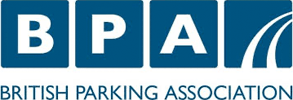
Enabling Camera Technology
The Traffic Management Act 2004 (TMA) gives powers to reduce traffic congestion in towns and cities. It includes the traffic signs to which moving traffic enforcement will apply, as well as including the sign prohibiting goods vehicles for environmental reasons; such as narrow roads unsuitable for large vehicles, or to protect residents from the nuisance caused by lorries in residential streets.
What is Part 6 of the TMA?
Part 6 of the TMA gives the government the power to introduce a new framework for the enforcement of parking, bus lanes, certain moving traffic matters and the London lorry ban. It builds on and strengthens the successful civil enforcement regime introduced by the Road Traffic Act 1991, the Transport Act 2000 and London legislation. However, not all of Part 6 was ‘enabled’.
Part 6 commenced
The Department for Transport has commenced Part 6 of the Traffic Management Act 2004. The first tranche of local authorities now have civil enforcement powers of moving traffic contraventions, to the Secretary of State for an Order to be made, designating the council as the enforcement authority in their area. The last government was slowly giving more councils these powers, giving a second tranche of authorities the necessary powers, but stopped in March 2024. November 2024 saw the current government pass legislation giving even more councils MTE powers.
Isaac Occhipinti, BPA Head of External Affairs, said that 'the BPA are delighted that the Government have indicated they will restart the Moving Traffic Enforcement (MTE) scheme. MTE is a fantastic tool for local authorities to help them manage traffic and parking, especially in complex areas like outside schools.'
Statutory guidance
The Department for Transport Statutory Guidance: Traffic Management Act 2004 for local authorities outside London on civil enforcement of bus lane and moving traffic contraventions is in the resource library.
There are no plans to expand the list of applicable traffic signs in TMA 2004 to include structural weight limits, or vehicle height, width, length limits, which will remain enforceable by the police. See full statement here.
How will it help?
Enabling the remaining elements of Part 6 of the TMA permits for the first time local authorities outside of London and Cardiff to enforce moving traffic offences using cameras. This includes things like:
- stopping in a yellow box junction
- making illegal turns
- no entry roads
- access restrictions
- enforcing cycle lanes, and enforcing idling
By ensuring traffic flow, it is envisaged that dwell times to find parking spaces will reduce as will pollutants from motor vehicles improving air quality.
What the BPA would like in addition
We would also like to see ANPR used by local authorities and we are calling on government to enable the use of cameras and other remote-monitoring technologies to their fullest extent thus allowing local authorities to innovate and meet the needs of their communities.
During the last government, we wrote to then Transport Secretary Grant Shapps who replied to say that it was not an appropriate time to consider this legislation since it “would take several months to bring a set of regulations into force.” We are continuing efforts to affect change on this matter now, and feel confident in the opportunities a new government will bring us as we go forward.
Links
BPA Moving Traffic Enforcement Hub - including FAQ, DfT factsheets and webinars
Further reading
A country in a jam: tackling congestion in our towns and cities - LGA 2017
Traffic Management Act Part 6 - LGA survey results 2019
